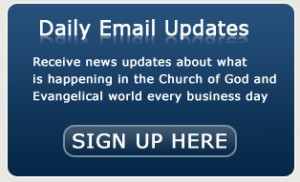The Relationship Among Art, Innovation and Corporate Worship
Let your imagination wander for a moment.
By David Santistevan
What if this Sunday morning, rather than singing worship songs as a church, you showed a painting of the Mona Lisa? Or some impressionist art from Monet? Or what we filled the stage with painters and sculptors creating for the glory of God?
It’s a beautiful expression, but is it helpful for corporate worship? Probably not.
Or what if instead of sung worship we showed a series of short films and encouraged people to give spoken words to each other? A beautiful expression, but quite chaotic for corporate worship.
Let’s take the new Hillsong Worship album for example. As I talk about Hillsong Worship with my musician-nerd friends, there’s always a tinge of disappointment in their voice. Everything sounds the same.
Nothing is innovative. It’s very basic.
But what if the goal of Hillsong Worship wasn’t to be innovative, but rather helpful in gathering large groups of people around the foot of the cross? What if the goal of their albums wasn’t to say, “Look how impressive we are,” but rather, “Look how beautiful it is when the redeemed people of God gather and declare the praise of Him who called us out of darkness and into his marvelous light.”
Are you weird? There’s a place for you. Are you simple? There’s a place for you.
Distracting Creativity
There comes a point when our songs move from an engaging, participatory activity into a spectacle all its own. There’s nothing wrong with weird, artsy, break-out-of-the-box music. And there’s nothing wrong with simple, run-of-the-mill, predictable CCM music. The issue is finding their proper place in the body of Christ.
Let’s talk local church. The talent level of worship teams has risen dramatically over the last 20 years. It creates a pressure on worship leaders to be impressive and current but doesn’t always cause us to think about being helpful. It makes us think about leaving our musical/creative mark but not how we’re connecting everyday people with an extraordinary God.
There’s nothing wrong with impressive art and impressive talent. But that shouldn’t be a worship pastor’s goal. A worship pastor serving their local church well will filter all creative decisions through the filter of, “Does this help people worship?”
There are many people in our churches who attend worship or observe worship, but are our songs and sets designed to help them engage with God and declare the truth of who He is?
It comes down to why you lead, why you write, why you do what you do. If it’s to serve your ego, stop. If it’s for any other reason than to love God’s people, serve God’s people, pour your life out for God’s people, than stop. Re-evaluate.
Where’s the Balance?
Because both the simple and the weird have their place.
One can cause a heart to behold a facet of God’s beauty never considered before—to see the magnitude of God’s glory in a new way. Another can help the left-brained businessman or lawyer to have a genuine connection with God at the altar on Sunday morning.
Both can be distracting for different people. That’s why we need to welcome the vast array of art and expression into the church. Let’s not limit the number of ways there are to spotlight the beauty of God.
I’d love to open this up for discussion. How have you found a place for the artistic, the weird, the unique to find their expression in corporate worship?
How do we find a creative outlet for the dancers, painters, and other artists to encourage the church in her worship of God?
How do we increase in creativity while also connecting people to their Maker?
David Santistevan is a worship pastor at Allison Park Church in Pittsburgh, Pennsylvania.
(Source: ministrytodaymag.com)




